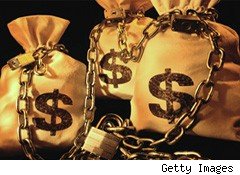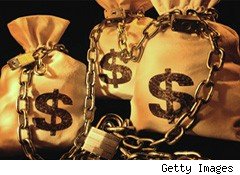 Here’s a question I get frequently: It’s obvious the dollar is going to crash, so what can I do to protect my investments?
Here’s a question I get frequently: It’s obvious the dollar is going to crash, so what can I do to protect my investments?
A compelling case can be made for the devaluation of the dollar: The U.S. is experiencing record deficits, the loss of our manufacturing base, slow growth and poor education; there’s the conduct of the Fed, which some believe is “devaluing” the dollar; and overseas, we’re seeing the strong ascendancy of Brazil, India and China.
Many investors are absolutely convinced the dollar is doomed. Here ‘s a list of options they want me to implement: Sell the dollar and buy stronger currencies, buy gold or other commodities, hold investments in accounts located in other countries, hedge against the dollar. Do any of those moves make sense?
No.
They’re all based on the false premise that currency markets are mis-priced.
Whatever You Know, the Market Knows Too
All these concerns about the dollar are valid. The problem is that those concerns are well-known to millions of investors around the world. My clients don’t know anything not in the financial media. All of that information is instantly factored into the price of all currencies.
adsonar_placementId=1505951;adsonar_pid=1990767;adsonar_ps=-1;adsonar_zw=242;adsonar_zh=252;adsonar_jv=’ads.tw.adsonar.com’;
Think about the way the market sets the price of currency and other assets. Traders and nontraders alike (because nontraders have made a decision not to trade), consider all available information, include future uncertainty, and establish a market-based price. Exchange rates are set in the same manner. As such, current prices are fair prices.
This analysis doesn’t mean you can’t make money speculating on currency or stocks. Prices go up and down. But what will move prices is tomorrow’s news, and no one knows in advance what that news will be. Unfortunately, trying to predict the movement of the currency market is a zero sum game (or worse, given transaction costs). Here’s something else to keep in mind: If you’re so sure the dollar is doomed and you want to bet against it, who’s on the other side of that trade? Presumably, that person has a contrary view.
Worried About America? Buy American Stocks?
Let’s assume you have looked at the data and are convinced the U.S. economy is headed for disaster. Here’s my advice: Buy stock in U.S. companies. Why? Because the buyers and sellers in the market have already priced those assets to reflect all of your concerns. The market has determined U.S. companies are risky assets, and what do we know about risky assets? Over time, the expected return on risky assets is significantly higher than the expected return on safer ones. Want proof?
The returns of the index measuring emerging markets — the MSCI Emerging Markets Index (EEM) — averaged 9.98% between 1989 and 2008 . The returns of the S&P 500 Index over the same period were only 8.42%. There’s no doubt the companies in the S&P 500 Index were far less risky investments than companies located in countries such as Pakistan, Egypt and Turkey, where reliable financial data is hard to find.
I’m not suggesting you invest a significant portion of your portfolio in emerging markets: Most advisers would limit investments in them to 10% of your portfolio because of their extreme volatility. For example, in 2008, the MSCI EM Index lost 53.33% of its value.
Think Logically, Diversify Globally
Here’s another example. From February 1955 to August 2010, the United Kingdom was in a steady decline, much like current predictions for the U.S. economy. During this period, investors in the FTSE All-Share Index (which measures the returns of U.K.-based companies) had an annualized return of 10.7%. The S&P 500 had an annualized return of 9.7%. Investors in the riskier asset reaped greater returns.
There is an intelligent strategy that will protect you against the risk of collapse of the U.S. dollar. It’s global diversification, using low-cost stock and bond index funds. Global diversification of your portfolio reduces risk and increases return. A well-diversified portfolio captures the returns of the global economy, and should include the stocks and bonds of more than 12,000 holdings in 43 countries around the world.
Don’t engage in risky and discredited strategies, or pay attention to the fear-mongering in the financial media. You’d be much better advised to understand the underlying basis for how prices are set, and the risk inherent in assuming these prices are not “fair.”
That’s the real risk of betting against the dollar.


Leave a Reply